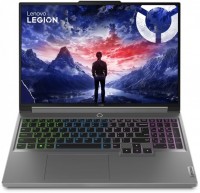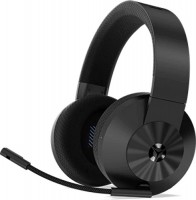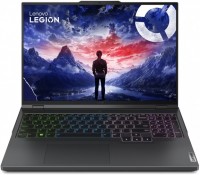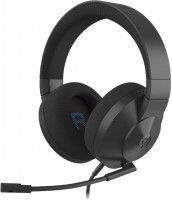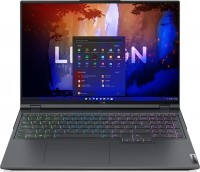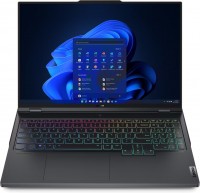from $999.99 game, 16 ", 2560x1600 (16:10), IPS, 165 Hz, Core i7, 14650HX, 1.6 GHz, RAM 16 GB, DDR5, RTX 4050, SSD M.2 NVMe, 512 GB, USB 3.2 gen1, USB C gen2, Windows 11 Home, Wi-Fi 6E, VR, fast charge, 2.4 kg
from $18.99 gaming, overhead, closed, combined, detachable cable, 3.5 mm, 1.2 m, radio channel, 20 – 20000 Hz, 32 Ohm, battery: up to 20 h
from $87.99 urban, for laptop, pockets: front, on the back, 50.5x36x18 cm, weight 1443 g
from $2,194.99 game, 16 ", matte, 2560x1600 (16:10), IPS, 165 Hz, Core i7, 14650HX, 1.6 GHz, RAM 16 GB, DDR5, RTX 4060, SSD M.2 NVMe, 1024 GB, USB 3.2 gen1, USB C gen2, Windows 11 Home, Wi-Fi 6E, VR, fast charge, 2.5 kg
from $55.99 gaming, in-ear, wired, USB C, 1.2 m, multichannel, 20 – 20000 Hz, 32 Ohm
from $59.99 urban, on a suitcase, for laptop, pockets: front, lateral, 40x29x26 cm, weight 1150 g
from $1,699.00 high performance, game, 16 ", 2560x1600 (16:10), IPS, 165 Hz, Core i9, 13900HX, 1.6 GHz, RAM 32 GB, DDR5, no RAM upgrade, RTX 4060, SSD M.2 NVMe, 1024 GB, USB 3.2 gen1, USB C gen2, Windows 11 Home, Wi-Fi 6E, VR, fast charge, 2.6 kg
from $41.49 gaming, overhead, closed, wired, 2x3.5 mm, 2 m, 20 – 20000 Hz, 32 Ohm
from $79.99 urban, on a suitcase, 19 L, for laptop, pockets: on the back, 47x31.5x20 cm, weight 1270 g
from $2,419.99 high performance, game, 16 ", matte, 2560x1600 (16:10), IPS, 240 Hz, Core i9, 14900HX, 1.6 GHz, RAM 32 GB, DDR5, no RAM upgrade, RTX 4070, SSD M.2 NVMe, 2048 GB, USB 3.2 gen1, USB C gen2, Windows 11 Home, Wi-Fi 6E, VR, fast charge, 2.5 kg
from $49.99 gaming, overhead, closed, wired, 3.5 mm, 2x3.5 mm, 1.85 m, 20 – 20000 Hz, 32 Ohm
from $1,899.99 high performance, game, 16 ", matte, 2560x1600 (16:10), IPS, 165 Hz, Core i9, 14900HX, 1.6 GHz, RAM 32 GB, DDR5, no RAM upgrade, RTX 4070, SSD M.2 NVMe, 2048 GB, USB 3.2 gen1, USB C gen2, Windows 11 Home, Wi-Fi 6E, VR, fast charge, 2.5 kg
from $69.00 gaming, overhead, closed, wired, 3.5 mm, USB A, 1.3 m, multichannel, 20 – 20000 Hz, 32 Ohm
from $2,709.99 high performance, game, 16 ", matte, 2560x1600 (16:10), IPS, 240 Hz, Core i9, 14900HX, 1.6 GHz, RAM 32 GB, DDR5, no RAM upgrade, RTX 4070, SSD M.2 NVMe, 1024 GB, USB 3.2 gen1, USB C gen2, Windows 11 Home, Wi-Fi 6E, VR, fast charge, 2.5 kg
from $3,649.00 high performance, game, 16 ", 2560x1600 (16:10), IPS, 240 Hz, Core i9, 14900HX, 1.6 GHz, RAM 32 GB, DDR5, no RAM upgrade, RTX 4090, SSD M.2 NVMe, 2048 GB, USB 3.2 gen1, USB C gen2, USB4, Thunderbolt, Windows 11 Pro, Wi-Fi 6E, VR, fast charge, long life, 2.62 kg
from $1,839.99 game, 16 ", 2560x1600 (16:10), IPS, 165 Hz, Ryzen 7, 7745HX, 3.6 GHz, RAM 16 GB, DDR5, RTX 4070, SSD M.2 NVMe, 1024 GB, USB 3.2 gen1, USB C gen2, Windows 11 Home, Wi-Fi 6E, VR, fast charge, 2.5 kg
from $1,829.00 game, 16 ", 2560x1600 (16:10), IPS, 165 Hz, Ryzen 7, 6800H, 3.2 GHz, RAM 16 GB, DDR5, RTX 3070 Ti, SSD M.2 NVMe, 1024 GB, USB 3.2 gen1, USB C gen2, Windows 11 Home, Wi-Fi 6E, VR, fast charge, extreme battery life, 2.49 kg
from $1,899.99 game, 16 ", 2560x1600 (16:10), IPS, 165 Hz, Ryzen 7, 7745HX, 3.6 GHz, RAM 32 GB, DDR5, no RAM upgrade, RTX 4070, SSD M.2 NVMe, 1024 GB, USB 3.2 gen1, USB C gen2, Windows 11 Home, Wi-Fi 6E, VR, fast charge, 2.5 kg
from $1,999.99 high performance, game, 16 ", 2560x1600 (16:10), IPS, 165 Hz, Core i7, 14700HX, 1.5 GHz, RAM 32 GB, DDR5, RTX 4070, SSD M.2 NVMe, 1024 GB, USB 3.2 gen1, USB C gen2, Windows 11 Pro, Wi-Fi 6E, VR, fast charge, 2.4 kg
from $3,469.00 high performance, game, 16 ", 2560x1600 (16:10), IPS, 240 Hz, Core i9, 13900HX, 1.6 GHz, RAM 32 GB, DDR5, no RAM upgrade, RTX 4090, SSD M.2 NVMe, 2048 GB, USB 3.2 gen1, USB C gen2, USB4, Thunderbolt, Windows 11 Pro, Wi-Fi 6E, VR, fast charge, 2.8 kg


